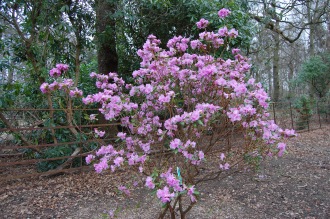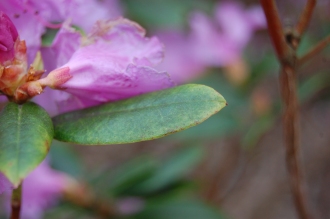Position: Partial shade
Flowering period: Late winter to early spring
Soil: Moist, well drained, acidic
Eventual Height: 2m
Eventual Spread: 2m
Hardiness: 5a, 5b, 6a, 6b, 7a, 7b, 8a, 8b
Family: Ericaceae
Rhododendron dauricum is a semi evergreen shrub with an open branching habit. Its dark leathery green leaves are elliptic with entire margins, spirally arranged and up to 4cm in length. Its pale purple flowers are funnel shaped with wavy edges, up to 2cm long and appear in groups of up to 3. The fruit of the plant is capsule like.
Rhododendron dauricum, commonly known as Daurian Rhododendron, is native to east Russia, Mongolia, north China and north Japan.
The etymological root of the binomial name Rhododendron is derived from the Greek rodon ‘a rose’ and dendron ‘a tree’. Dauricum is derived from the Latin meaning ‘from the Daurian forest steppe’.
The landscape architect may find Rhododendron dauricum useful as an evergreen shrub with attractive flowers suitable for understory deciduous woodland planting schemes. It is particularly suitable for planting in soils with an acid pH.
Ecologically, Rhododendron dauricum is of little ecological value in the UK as its nectar is poisonous to bees.
The Royal Horticultural Society has given the variety Rhododendron dauricum ‘Mid Winter’ their prestigious Award of Garden Merit in 1993.
Rhododendron dauricum prefers moist, humus rich, well-drained soils. It prefers an acid to neutral pH of soil.
Rhododendron dauricum requires little maintenance. Pruning should be carried out after flowering but before the new buds form.







Leave a comment